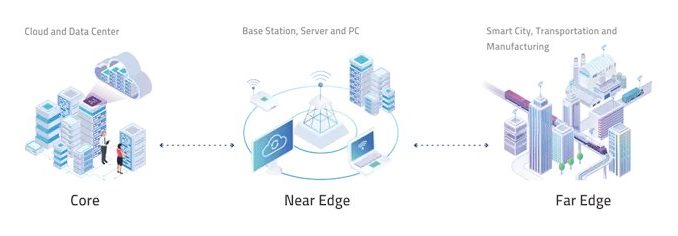
How much computing power is needed at the edge? How much memory and storage are enough for AI at the edge? Minimum requirements are growing as AI opens the door to innovative applications that need more and faster processing, storage, and memory. How can today’s memory and storage technologies meet the stringent requirements of these challenging new edge applications?
What do we mean by “the edge”?
Edge includes any distributed application where specific processing occurs away from the server, even if the data is eventually sent to a data center. The big idea is to avoid sending all the data over the internet for processing on a server and instead allow data to be processed closer to where it’s collected, avoiding latency issues with long data roundtrips, and enabling near real-time response on site.
The edge is roughly divided according to the distance from the server to the endpoint. The so-called near edge can include applications close to the data center, perhaps even within the same building. The far edge takes the other extreme in applications such as autonomous vehicles. The overlapping feature is that the edge system processes data that would have traditionally been sent to a data center. This has practical applications in many industries.
